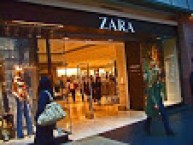Nouse. 15 April 2021

Below is an article published by Nouse. Photo:Leif Harboe.
In an age of fast fashion and even faster news, staying ‘woke’ presents itself as an exhausting task. A topic that isn’t just another uninformed marketing faux pas, the issue of forced labour in Xinjiang involves one million people and demands everyone’s attention.
Uighur Muslims make up just under half of the population of the autonomous Xinjiang region of North-West China, totalling at around 12 million and speaking their own language. Despite the draconian measures restricting access to the region, human rights organisations have been able to draw attention to the existence of forced labour camps home to at least one million Uighurs. This has been going on since at least 2016.
China’s ‘re-education through labour’ system, which saw the detainment of between 190,000 and two million people per year from 1957, was supposedly abolished in December 2013 following international outcry. Recent developments in Xinjiang suggest that the system was never truly abolished, just reworked and given an even higher level of state security. The Chinese government has defended the new system by arguing that the detainment facilities are ‘job training centres’, but the reality is that minorities are being used for forced labour in poor conditions and there is further evidence of women being forcibly sterilised.
So where do textiles come into this? Xinjiang happens to be one of the leading producers of cotton, accounting for about a fifth of the $38 billion dollar industry.
In 2019, reports were published ( In the New York Times and Washington Post ) that connected forced labour from Uighurs in so called ‘re-education’ centres, to the cotton supply chain and therefore to some of the world’s biggest fashion retailers. Many brands reassessed their ties with the region; H&M released a statement citing ‘deep concerns’ about the reports and confirmed they had decided to source their cotton elsewhere.
China has faced serious sanctions in light of the ever-apparent human rights violations. In January, the Trump administration placed a ban on all cotton and tomato imports from the Xinjiang region, representing an appropriately hard-line stance that both Canada and Britain hurried to follow. Foreign secretary Dominic Raab said “we must do more and we will”, going on to outline measures to fine businesses that source materials and profit from the forced labour in Xinjiang, in accordance with the Modern Slavery Act 2015. China has refuted all claims, urging countries to “stop interfering in [their] affairs”.
China has reacted with unsurprising fury, with the brands that denounced Xinjiang sourced cotton being removed from major e-commerce platforms and rendered the targets of a nationwide boycott. These brands include, but are not exclusive to: H&M, Patagonia, Nike, Burberry, M&S.
On Monday, March 22, the US, Canada, the United Kingdom and the European Union escalated sanctions further. While the January developments were significant given a sweeping ban on imports, these new penalties target individuals specifically. Magnistky style sanctions, as they are called, are important in that they punish officials directly, in this case the penalties were levied against two officials by the US, and four officials by the EU, Canada and the United Kingdom. China has responded by sanctioning 10 European officials. This is certainly not the last we’ll hear of the widening tensions between the West and China with regard to Xinjiang, the implications of which cannot fully be estimated.
Inditex, the parent company of Zara, initially released a statement confirming their “zero tolerance for forced labour”. Last week, however, Inditex removed this statement from both their English and Spanish sites, appearing to have been intimidated by China’s response to other similar brands. The Global Times used Google’s snapshot to identify when the statement was taken down, it was last seen at 10am GMT on March 24. To put it bluntly, Inditex’s decision to quietly remove its zero tolerance policy on forced labour serves to embolden China’s human rights violations.
While the war between markets and morality wages on in the top rungs of international government, fashion has been labelled a ‘diplomatic football’, but where does this leave the consumer?
Armed with the above information, the consumer has a decision to make. Zara’s growth over the past year solidifies its position as a force to be reckoned with on the high street, but it has sacrificed a level of integrity that doesn’t quite fly under the radar in a way it might have once before. In a digital age where transparency is paramount, consumers are more aware of who makes their clothes and how those people are treated, values of sustainability are a badge of honour which draws a market base keen to champion it.
Buying something from Zara doesn’t equate to the detainment of one Uighur Muslim, nor does it send your great British pounds directly to the Chinese government, but it does place the consumer at the end of a very long supply chain that could potentially be traced back to the detainment centres in Xinjiang responsible for the gross human rights abuses. Being educated as to where your clothes are coming from is already a step in the right direction, but in an age of accessible information, at least for the target audience of this article, it hardly seems enough to just be in-the-know. Abstaining from purchasing the latest Zara pieces will hardly dismantle the web of market imperatives that operate beyond the reach of the consumer, but it does represent a personal choice to withdraw support at its most fundamental level.